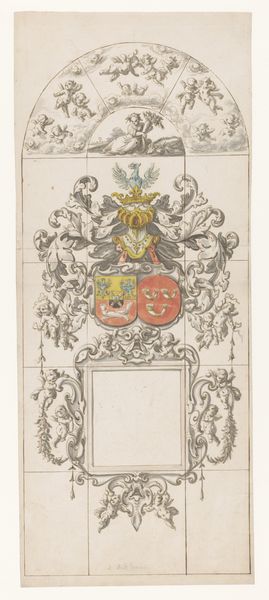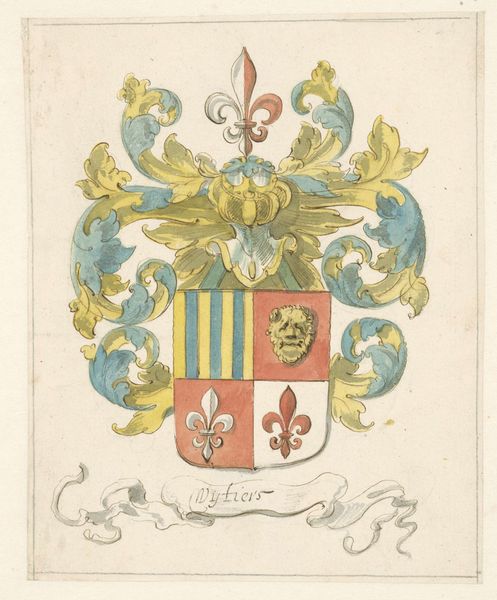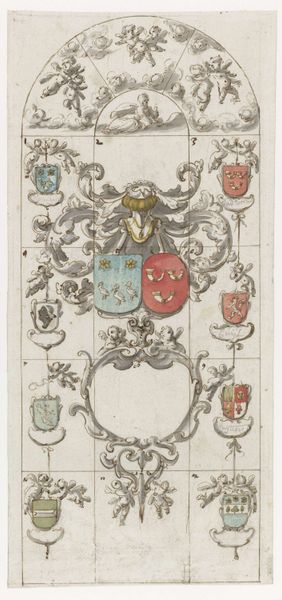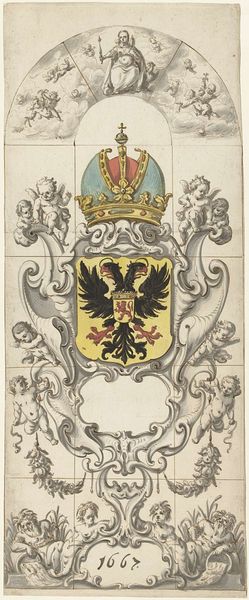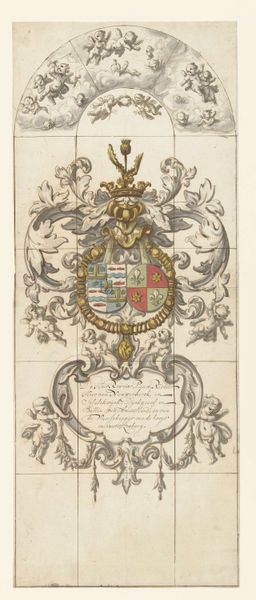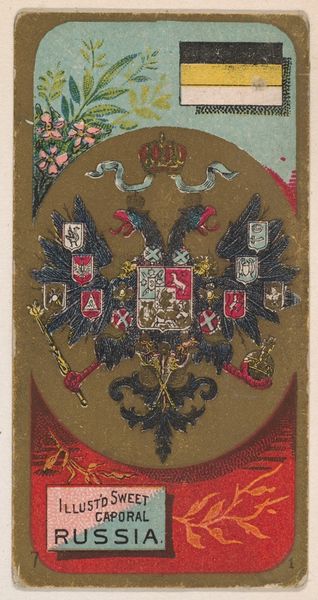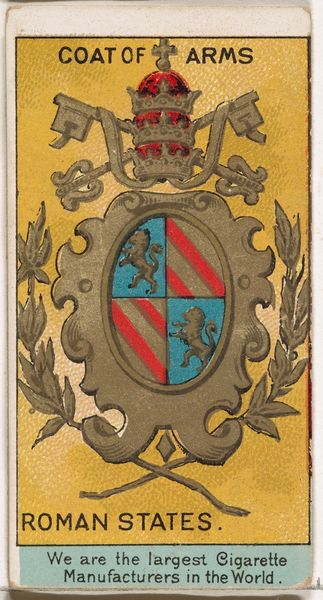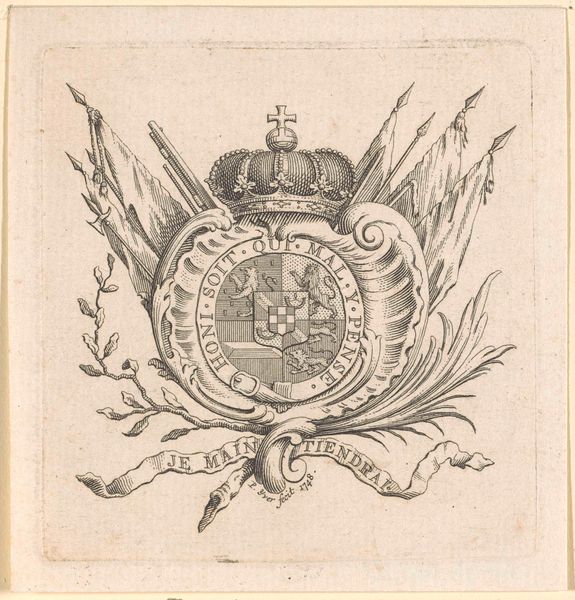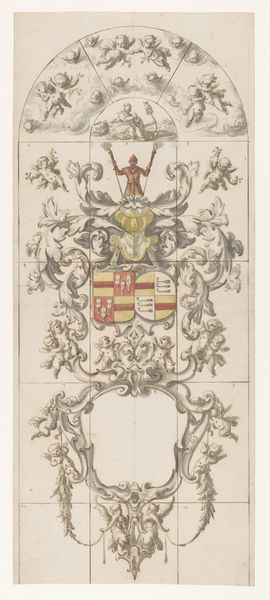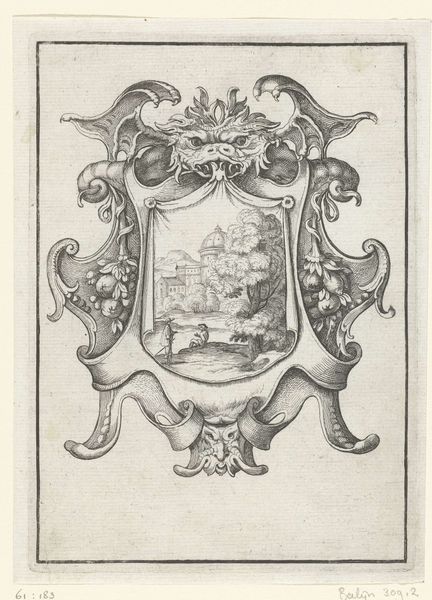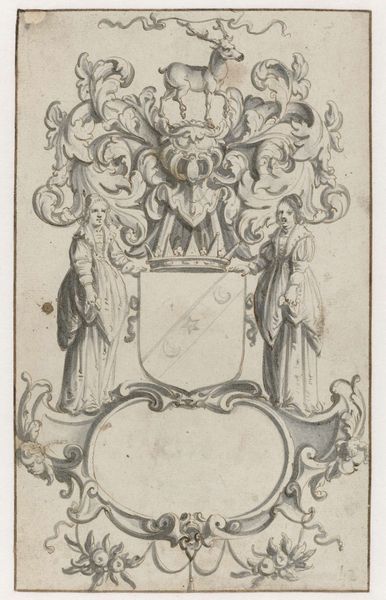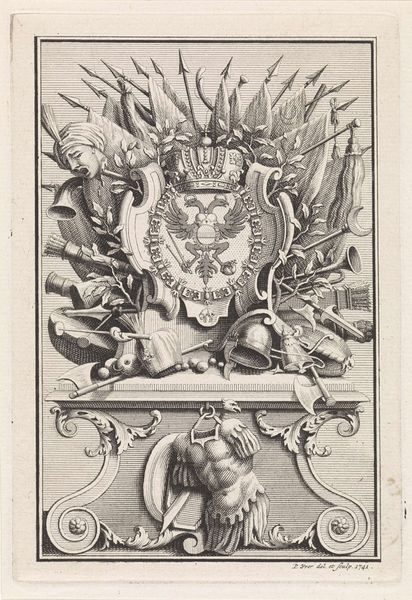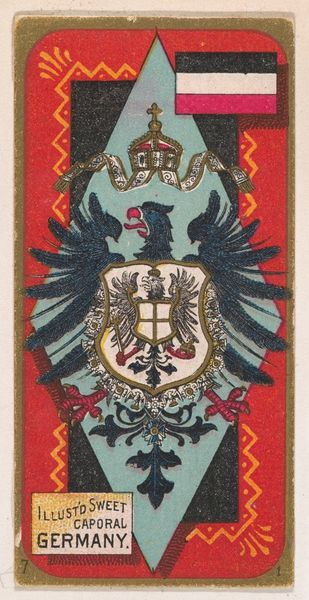
Ontwerp voor glasraam 8 geschonken door prins Willem Hendrik op zeventienjarige leeftijd 1665 - 1667
0:00
0:00
drawing, ink, pen
#
drawing
#
allegory
#
baroque
#
pen drawing
#
ink
#
pen
#
history-painting
Dimensions: height 586 mm, width 229 mm
Copyright: Rijks Museum: Open Domain
Curator: This delicate drawing, rendered in pen and ink, is entitled "Design for stained-glass window 8, gifted by Prince William Henry at age seventeen." It dates back to around 1665-1667, the Dutch Baroque period. Editor: At first glance, it feels so ornate! A real feast for the eyes, the elaborate scrollwork, cherubic figures, and that prominent heraldic shield create an impression of almost overwhelming richness. It also feels quite large, but that's misleading, isn't it? Curator: Indeed. This artwork presents an intricate tapestry of power, privilege, and societal expectations embedded in such commissions. A seventeen-year-old prince making such a gift is less about genuine generosity and more about demonstrating his future position and upholding the norms of aristocratic exchange and display of influence. It really invites examination of how symbols like heraldry are manipulated to legitimize power structures. Editor: And that crown looming above the shield isn't exactly subtle! Beyond the symbolism, I'm curious about the actual making of this window. It would have demanded tremendous skill from various artisans - glassmakers, glaziers, and leading came workers each involved in distinct and equally essential activities. How would this pen drawing then inform each of their individual and collaborative labour processes? Curator: The glass window would've served a political function; a potent reminder to all who beheld it of the Prince’s lineage, authority and the social contract between the ruling class and the ruled. I am thinking of the use of allegory. Doesn’t it speak to the careful curation of dynastic narratives that attempt to present themselves as benevolent protectors of the realm? Editor: Exactly! Thinking about it this way encourages us to deconstruct notions of artistic 'genius', drawing our focus, rather, to all of the individual labourers whose mastery, ingenuity and labour went into this kind of elaborate presentation of princely grandeur. Curator: Agreed. Thinking about this artwork really underscores how crucial it is to see beyond mere aesthetics and engage with the layered narratives of power, gender, and identity woven into the very fabric of its creation and reception. Editor: Yes, understanding the materiality really deepens my appreciation of all that went into producing such artwork, moving us beyond aesthetic appreciation to confront broader social implications of artistic labour, patronage and consumption.
Comments
No comments
Be the first to comment and join the conversation on the ultimate creative platform.
